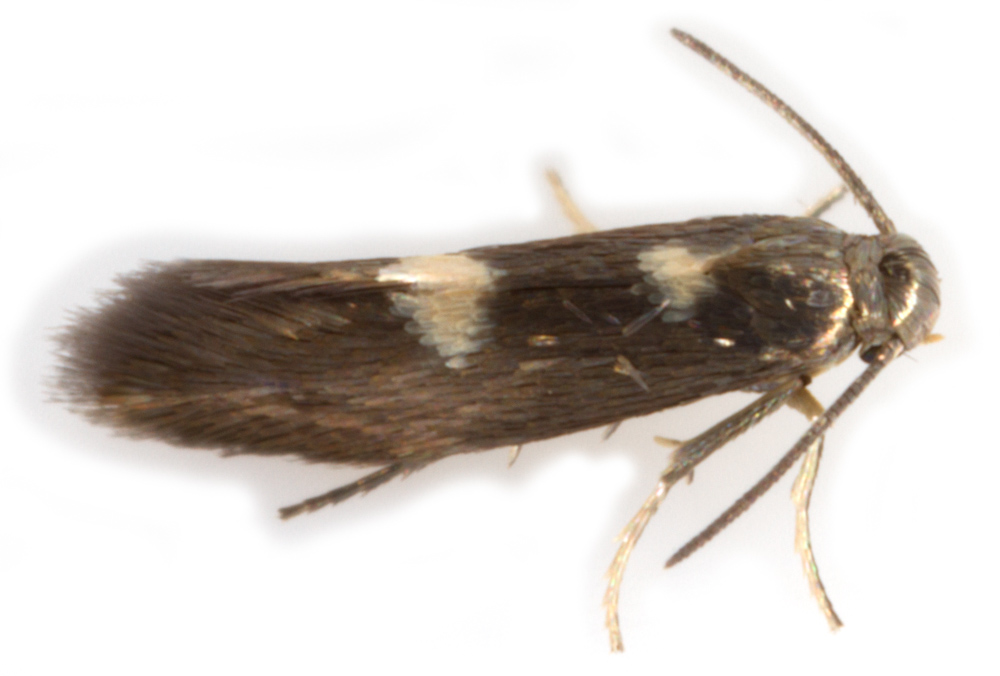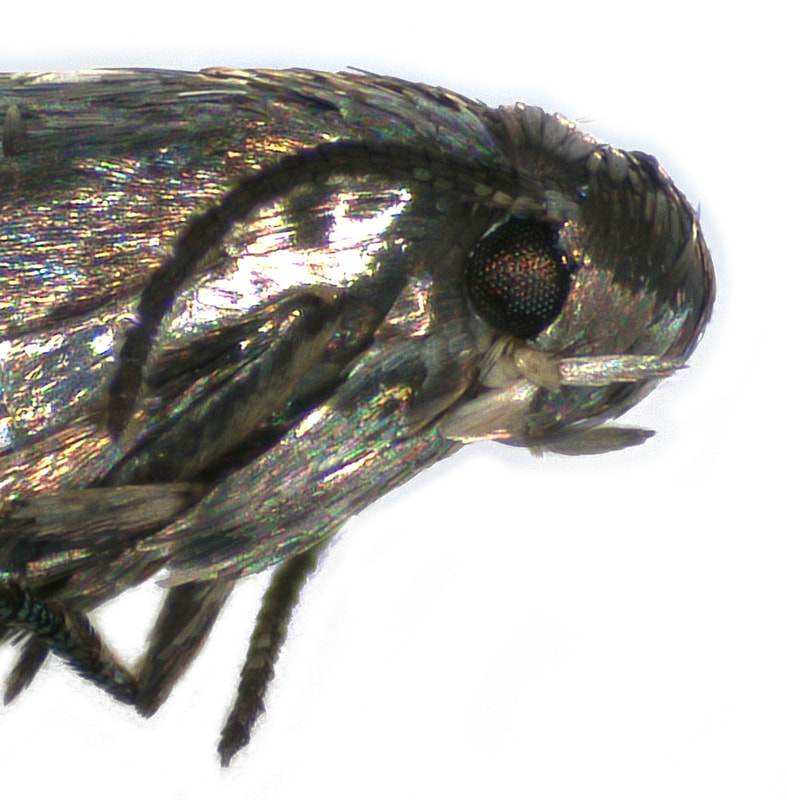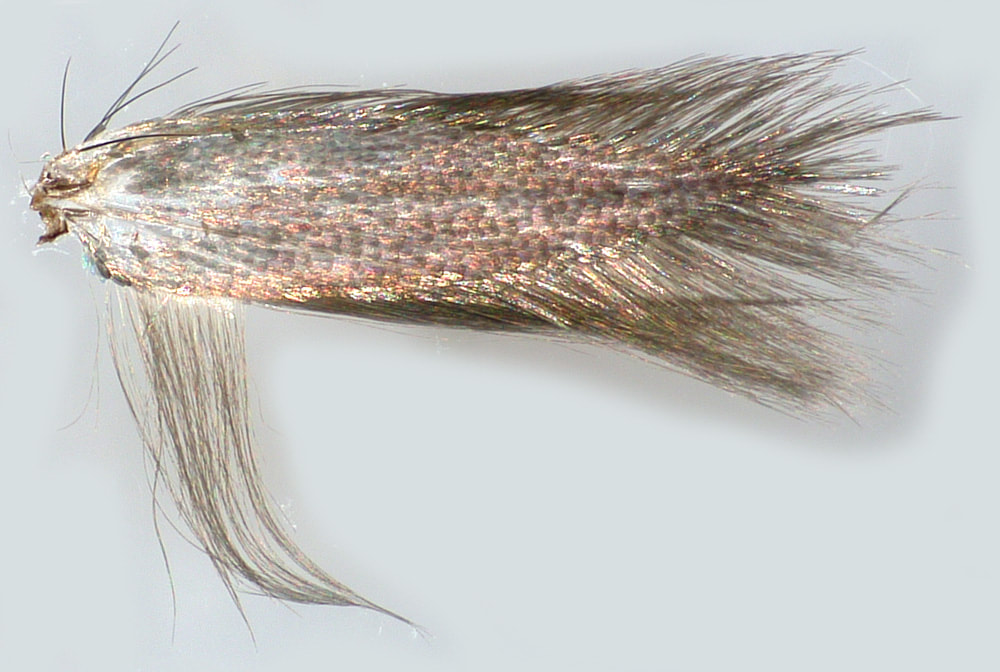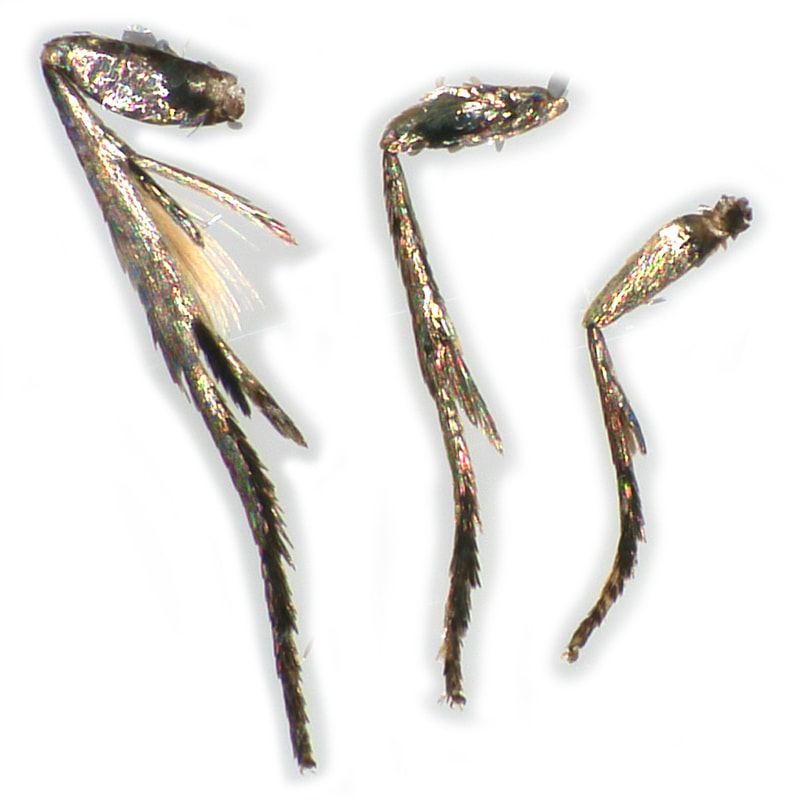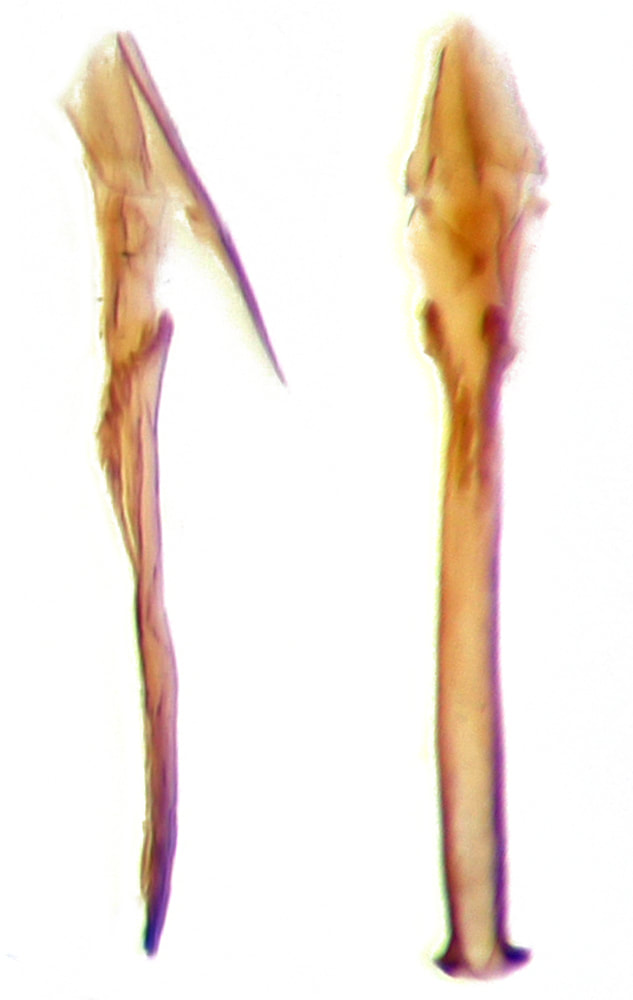06.004 Heliozela resplendella (Alder Cutter)
ws 5-7mm; Jun; alder (Alnus glutinosa); locally common in England, Wales & S.Scotland
ID: Similarly marked Incurvaria species are much larger. Antispila species have more extensive, silver-metallic markings. The 3 Heliozela species are almost identical with H.sericiella being a shade greyer than H.resplendella and H.hammoniella which are dark bronzy fuscous; genital dissection is required to identify the species (though proximity to the host plant may be a guide). Both sexes of all three species are shown (but not described) at Moth Dissection.
Male genitalia: All three species possess a structure at the junction of sacculus(?) and valvula(?). Based on comparison of images at Dissection Group - in H.sericiella this structure is 'solid', dark and has a long peduncle; in H.hammoniella it is pectinate, dark (due to the tines being sclerotised to the apex) and sessile with a narrow base; in H.resplendella it is pectinate, pale with a dark basal line (due to the tines being well sclerotised at the base only) and possibly has a short peduncle. In the aedeagus H.sericiella has a scobinate area at ~1/3 from the apex (this area is not shown for the other two species); H.sericiella has a fairly evenly rounded base (bulb); H.hammoniella has a straight but obliquely truncate base; H.resplendella has an expansion at the base which comes to an acute angle on one side.
Male genitalia: All three species possess a structure at the junction of sacculus(?) and valvula(?). Based on comparison of images at Dissection Group - in H.sericiella this structure is 'solid', dark and has a long peduncle; in H.hammoniella it is pectinate, dark (due to the tines being sclerotised to the apex) and sessile with a narrow base; in H.resplendella it is pectinate, pale with a dark basal line (due to the tines being well sclerotised at the base only) and possibly has a short peduncle. In the aedeagus H.sericiella has a scobinate area at ~1/3 from the apex (this area is not shown for the other two species); H.sericiella has a fairly evenly rounded base (bulb); H.hammoniella has a straight but obliquely truncate base; H.resplendella has an expansion at the base which comes to an acute angle on one side.
|
Genitalia of §1
The genitalia of this individual are quite malformed. Left - ventral; centre left upper - enlargement of valva region with saccus removed, showing an incompletely developed right valva and a rudimetary left valva; centre left lower - further enlargement of the structure on which the ID depends, pectinate with the tines well-sclerotised only at the base; centre right - dorsal; right upper - enlargement of tegumen, dorsal; right lower - this group of sclerotisations was contained within the capsule but was entirely deciduous - I think the structures, from the top down, are a juxta, part of the left valva and a very malformed aedeagus. |
§1 Upton Fen, Norfolk; 14/05/2015; male; fw 2.8mm; tapped from alder
§2 Covert Woods, Kent; 09/05/2022; female; fw 2.9mm; to light
§3 Covert Woods, Kent; 09/05/2022; male; fw 2.7mm; to light
All images © Chris Lewis
§2 Covert Woods, Kent; 09/05/2022; female; fw 2.9mm; to light
§3 Covert Woods, Kent; 09/05/2022; male; fw 2.7mm; to light
All images © Chris Lewis
Page published 29/11/2015 (§1) | §2&3 added 08/08/2022
